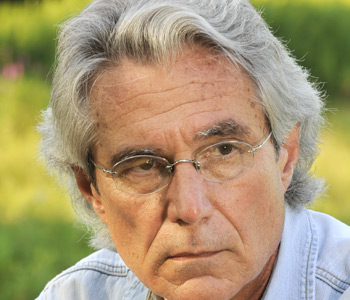Seth Lerer
Children’s Literature: A Reader’s History from Aesop to Harry Potter
University of Chicago Press
400 pages, 9 x 6 inches
ISBN 978 0226473017
My book is about the making of the literate imagination in the history of children’s literature. More than just a survey of books and authors, Children’s Literature is a critical narrative of how education, the family, and social life come together in the many different kinds of things that children read.
I look at literature that was not only written for children, but all books read by children: thus, at different points in history, Homer, Virgil, Chaucer, Shakespeare, Swift, Defoe, and Twain were all “children’s writers” in that their works were adapted for and read by young people. My book therefore also looks at the wide traditions of children’s literature in the West—quite literally, from Aesop to Harry Potter—to see the different ways in which cultures and societies defined childhood, understood acts of reading and writing, and taught social values and ideals.
Finally, my work looks at the history of the book and children’s literature: how the physical artifact of the written, printed, illustrated, and even digital book bears meaning and has a social impact on the imagination of the reading child.

At different points in history, Homer, Virgil, Chaucer, Shakespeare, Swift, Defoe, and Twain were all 'children’s writers.'
I first became interested in the history of children’s literature when I was working on the writings of Geoffrey Chaucer. Chaucer was viewed as the “father of English Literature,” and he was also viewed by his later readers of the fifteenth and sixteenth century as a writer with educational content.
I thus became aware of literary history itself as a kind of family romance—if there was a father of literature, who where the children? I also became aware of Chaucer’s literary “fatherhood” as granting a particular authority—he could be read as a kind of fatherly figure teaching children.
These scholarly concerns dovetailed with my own, personal experience of child-rearing and reading to my son, Aaron, so that after a while I became both professionally and personally concerned with the history of education and the rise of childhood literacy.
Among the general principles guiding the book, therefore, some are critical, some are social, and some are personal.
The critical principles are that, while authors may intend a particular meaning for literary works, meaning is made by or brought to literary works by readers. The meaning of a literary work in a culture is, in many ways, the sum of the traditions of reading it over time. Thus, we come to Chaucer, or Shakespeare, or Toni Morrison, or Jane Austen through the filter of generations of teachers and critics, of popular cultural adaptations, and of our own tastes and presuppositions. Children’s literature, I argue, works in these ways.
The social principles behind my work involve a view of reading (especially reading in groups) as an ethical practice. Reading to and with children is a form of familial bonding. Communities of reading—shaped by schools, public libraries, book groups, and the like—build social networks. Many works of children’s literature take as their very theme the making of a literate child, and many works often have scenes of reading and writing as moments of growth and revelation in their narrative.
My personal principles lie in a conviction that, whatever the rise of digital technology in society, the physical, bound book remains a unique artifact. Our experience of reading bound books is different from our experience of reading on a screen (however book-like). Thus, I am concerned with the physical, bodily experience of reading and writing, and the ways in which children’s books themselves become talismans of identity for children as they grow up.
I’d like the browsing reader to come, first, to the general introduction to my book – here I outline the principles and scope, the personal experiences that led me to write it, and the expectations of the reader.
Then, I would like the reader to experience the book’s various chapters according to his or her tastes.
For example, “Theaters of Girlhood” discusses literature for and about young women, addressing the performative nature of female identity in history and locating that focus in some of the classics of the genre (Little Women, Anne of Green Gables, The Wizard of Oz).
Male readers may be fascinated by the chapters on boys’ adventure books and the “ripping yarns” of the nineteenth century (with their blend of colonial aspiration and Darwinian science).
Historians may be intrigued by the importance of the work of John Locke in the history of children’s literature and may focus on the chapter devoted to him.
Similarly, scholars and students of American Studies may find the chapter on the Puritans particularly interesting, especially the understanding of the Puritans as deeply focused on childhood and family and, in effect, as developing modern children’s literature out of a blend of religious instruction, private journal writing, and allegorical narrative.

While authors may intend a particular meaning for literary works, meaning is made by or brought to literary works by readers ... children’s literature, I argue, works in these ways.
I’d like my book to have a wide readership, not only teachers and students, but parents, librarians, public activists—and even children themselves.
I have tried to treat children’s literature as literature: that is, as the sustained, imaginative work of writers with aesthetic concerns, social interests, and technical flair.
I’d like to see my book stimulate further work in the field, especially the notion of children’s literature as a “world” phenomenon, the idea of children’s literature in a digital age, and the changing nature of public and school libraries.
Finally, I’d like to encourage readers of the book to read to children—to recognize that social and personal bonding goes on over the pages of a book and that the best dreams come from having been read to sleep.




We don't put paywalls. We don't distract you with ads. We don't sell your data.
Please help to keep this running!